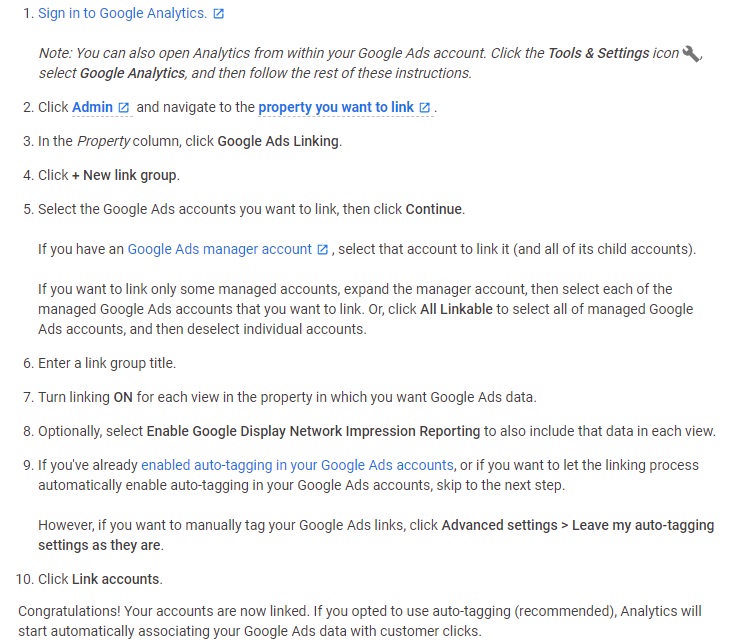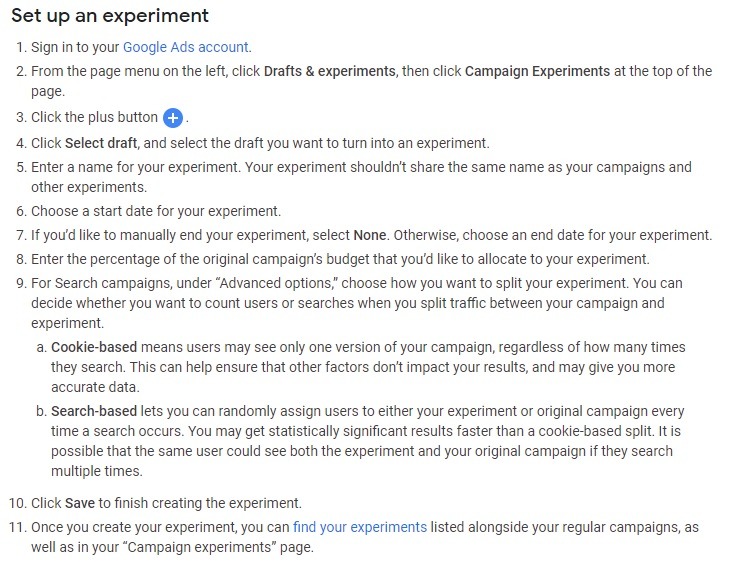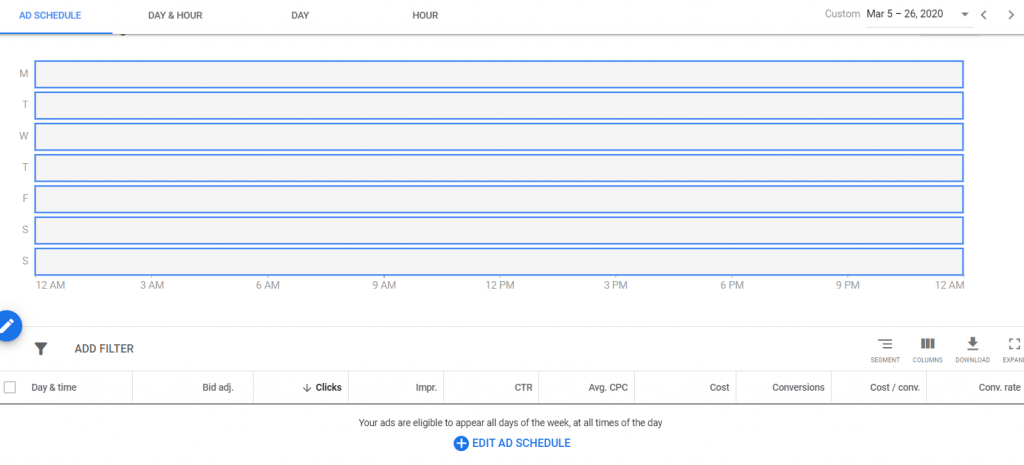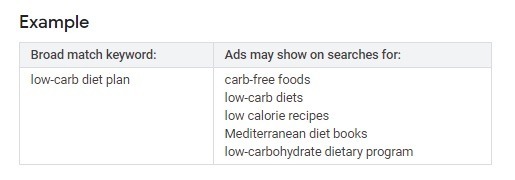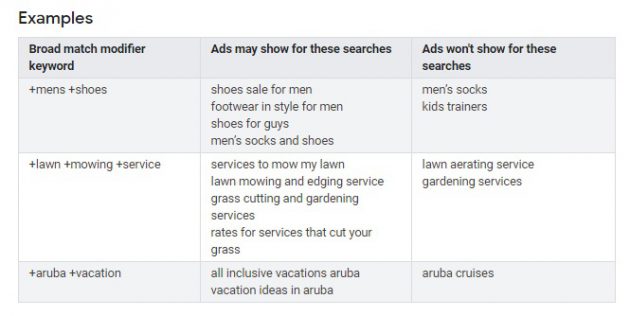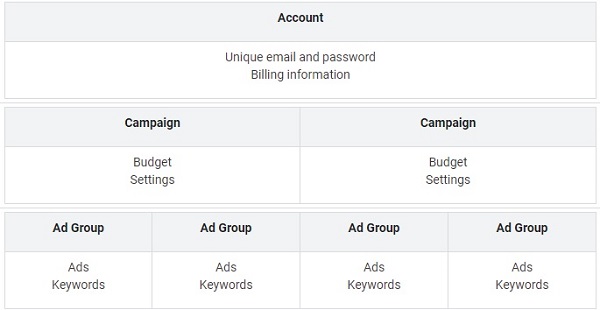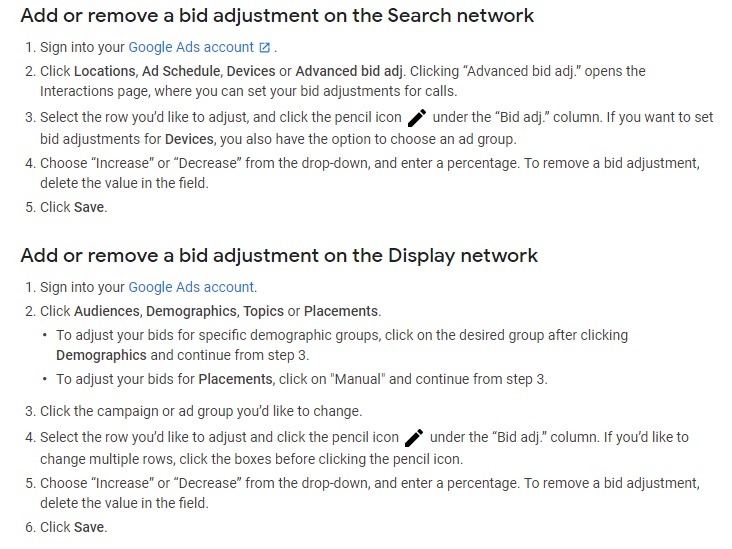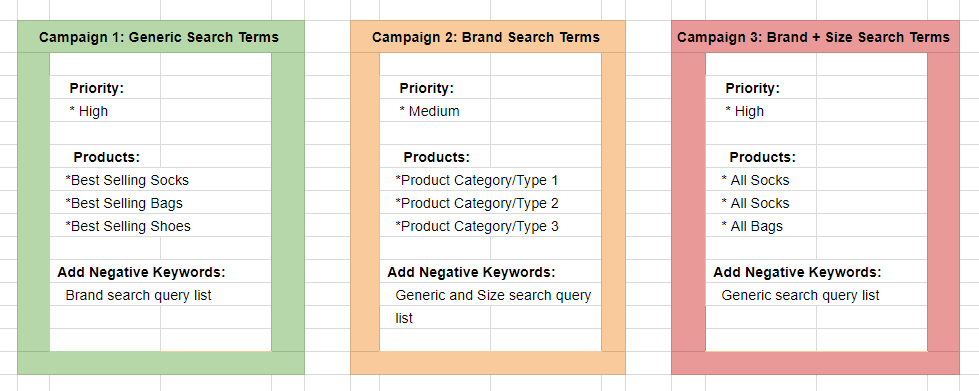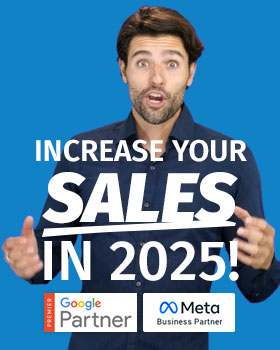If you’re looking for expert Google Ads tips, you’ve come to the right place! Being able to navigate Google Ads setup, optimization and management is the key to ensuring your PPC ads are working for you to drive highly targeted traffic and pushing conversions.
With over 15 years of PPC experience and millions in ad spend, our experts are here to help! Therefore, we’ve put together our 20+ top Google Ads tips and tricks that every eCommerce seller (from newbie to expert marketers) needs to know.
If you are already somewhat of a pro and Google Ads savvy but want to boost your ROAS further, you can skip to our Google Ads intermediate and expert tips and tricks section here.
Ready to get your Google Ads performing at peak ROAS performance? Then let’s jump in!
Basic eCommerce Google Ads Tips
1. Link Google Ads to Analytics for Accurate Conversion Data
One of the biggest reasons why there may be a discrepancy between analytics and Google Ads metrics is because you haven’t linked your accounts. It’s easy to do but often overlooked by new Google Ad marketers. When you link Google Ads to your Analytics accounts, you will be able to do or import the following in your Google Ads account:
- Enhance Google Ad remarketing and dynamic remarketing performance.
- Import metrics for page, session, bounce rate, etc.
- Activate Google Signals and important cross-device conversions.
- See all your online store performance data in your Google Ads reports.
- Import your transactions and goals.
Here is Google’s step-by-step guide to linking your accounts:
Bonus Content: New to Google Analytics tracking? Head over to our Google Analytics for eCommerce Guide.
2. Create New Ad Experiments for All Major Ad Groups
Testing is not something you can get away with skipping, even if you consider yourself an intermediate advertiser.
Testing and tweaking your ads’ performance before you go all in, is vitally important to the success of your Google Ads marketing. What you want to do as you grow your account, to ensure that you are not testing ‘from scratch,’ is to copy your best-performing ads from other ad groups, and then test these with changes.
Google makes A/B testing easier with their campaign experiment. Here you can create an experiment and then compare how it performs over time against your original campaign. You will also be able to more easily test variants such as headlines, descriptions and paths.
3. Use Google Ads Labels to Streamline Optimization
This simple Google Ads hack will save you a lot of optimization-admin time. How? By creating and using Google Ads labels, you will be able to better organize your campaigns, groups, ads and keywords.
Google Ads labels enable eCommerce marketers to quickly assess the performance of custom categories across their entire account. Here’s an example from Google, where they have used ‘Favorite’ and ‘Brand’ labels to elements at account level.
Let’s say you have an online apparel brand that sells to both men and women, and you’re running three campaigns to your top three target markets.
For this example, let’s go further and assume you are running a clothing, shoe and bag campaign, with each group catering to its respective market.
So your clothing campaign could be split into three in terms of keywords and targeting so that your groups may look like this: US – shoes, UK – shoes and a generic shoe campaign.
Now you want to run a report to see how well your sneakers are selling in the US versus the UK. With labels, you can do just that. You could create a ‘sneakers’ label that is applied to all sneaker-related keywords in your account, which you could then filter to see the performance of all your sneaker-related keywords.
Pro Tip: Use Google Ads Label to log specific ad group changes you make to easily track performance and optimize accordingly. This will help you save time when running tests and/or checking performance to optimize your Google ads.
How Set Up Google Ads Labels
4. Segment Your Ads By Product
Another critical Google Ads tip is to segment. Like with any marketing platform, segmenting is the key to campaign success. A good way to segment your Google campaigns is to segment your ad groups by product.
Let’s say you’re a successful online leggings store. Your current Google ads promote leggings generally, but you don’t have ads pushing some of your legging categories.
Now let’s pretend there is a potential shopper on Google right now, but they are searching for ‘short yoga leggings’ or leggings based on themes such as ‘Christmas leggings.’ That keen shopper is not going to see your ads, either because Google has marked it irrelevant, or, – if shown – it’s too generic to pique the interest of a shopper looking for something specific.
By creating ads that are segmented to product categories or styles, and the associated keywords, you not only have a better chance of reaching your potential shoppers and driving them to your online store, but converting them. Why? Because this is fundamental to driving highly targeted traffic to your store.
Pro Tip: Looking for ways to automatically send highly targeted traffic to your online store so that you can concentrate on other marketing streams and logistics? Traffic Booster is for you. With Traffic Booster, we automate Google Ads using our unique AI technology, taking the burden off your shoulders to help you get the right customers at the right time for the right cost.
5. Mine Your Metrics for Scheduling Optimization
This simple Google Ads tip can not only improve conversion rates, but help save unnecessary spend as well. Google’s ad schedule will enable you to schedule certain times when you want your ads displayed or your bids changed.
Some marketing scheduling choices are no-brainers, such as pausing your swimsuit ads in winter months, however, others will need a closer look to optimize. Once you’ve been running campaigns for some time, you will want to look at the metrics to make scheduling adjustments. Let’s say you identify certain times of the day or week you’re getting good impressions and clicks, while at others you’re getting impressions but no clicks, you could then schedule to show ads only during those peak periods.
To review your ad schedules, follow these steps:
- Select the ‘Ad Schedule’ tab and then the specific campaign to see its current ad schedule, along with performance and costs in those time slots.
- Review the campaign scheduling chart to see clicks, impressions, CTRs, etc., and view a further breakdown of performance by selecting the “Day and Hour,” “Day,” or “Hour” sub-tabs.
To adjust your Google ad schedules, you can follow these steps:
Once you have found your sweet spot and set your ad schedules, you can then increase bids for those high-performing times. This can help improve your ROAS, while also reducing wasteful spending.
Pro Tip: Use ad scheduling to upgrade your Shopping Ads performance by ensuring your ads are getting peak exposure. You can find out more by visiting our 2020 Full Google Shopping Guide.
6. Get Serious with Your Negative Keyword Strategy to Improve ROAS
Another hugely important Google Ads tip to ensure performance and unnecessary budget wastage is having a good negative keyword strategy. Negative keywords play a key role in ensuring that your ads are reaching potential shoppers who are more likely to click and buy from your ad. In short, it’s the number one Google optimization hack you have your disposal to ensure the traffic you’re generating is targeted.
Ultimately, you should be adding negative keywords to all of your campaigns. Having a good negative keyword strategy will help improve your CTRs, keep your ad groups more relevant, save wasteful spending all while eliminating non-relative clicks, and, therefore, increasing your conversion rate changes.
Newbie Tip: If you are brand new to Google Ads, head over to our Beginner’s Guide to Google Ads for introduction to Negative keywords and other key channel elements.
Here’s the thing, eCommerce sellers, a more advanced negative keyword strategy isn’t just about excluding irrelevant search queries. You should also be looking at your reports to find search queries that are giving you below-average CTRs and conversion rates, as well as those resulting in a higher-than-average cost per conversion.
7. Ditch Broad Match
One of the most common mistakes we see newer Google advertisers do is setting up Google accounts using broad match. Setting matching to broad means that Google will take misspellings, synonyms, related searches, and other variations of your chosen keywords into consideration.
Unless you are a brand new advertiser with very little data to start with, broad match will not bring you the kind of highly targeted traffic that you want. Instead, you should be testing one of Google’s more advanced matching options: exact match, broad match modifiers, or phrase match. Here’s an example of each:
Using any one of these options will result in more refined targeted traffic. The key is to test different strategies for your specific brand, products and market.
8. Expand Your Ad URLs Beyond Homepage
Another Google Ads tip that separates newbies from experts is Google Ads URLs. A huge mistake that online stores with tighter budgets make is to run ads that send traffic only to your online store home page. That’s not to say you shouldn’t run any branding Google ads to your homepage, where relevant.
The problem is when you’re sending people to your homepage, but your keywords and ads are targeting people for a specific product. This means relevance and shopping experience aren’t aligned. This can result in lower conversion rates and more untargeted traffic – especially if you’re using broad keywords. In a nutshell, this will affect your campaign performance negatively.
So, what to do instead? Use highly relevant product pages or category links that match in relevance to your ads and keywords!
Bonus Hack: Google’s custom URLs feature enables you to collect data and boost metric validity. You can create these URLs using the Campaign URL Builder tool.
9. Build a Strong Account Structure
Having an organized Google Ads account structure is vital in ensuring you can measure and optimize your campaigns effectively. It also limits keyword crossover, another important eCommerce Google Ads tip for success that prevents quality score deterioration, and, ultimately, the higher advertising costs that will result.
Before we get into the how, let’s break down the why. Here are the top three benefits of having a well-structured Google Ads account:
- The more organized your account is, the more likely you will be able to track performance and optimize accordingly.
- A well-structured account ensures that the searchers triggering your Google ads are relevant to the searchers and the potential shoppers searching – AKA, audiences.
- Both of the above will ensure your quality scores are better, which in turn improves results while keeping you on budget.
Now let’s get into the how! Below is a basic breakdown of a Google Ads account structure, as you know, you set budgets at campaign level and keywords at group level.
There are a number of ways you can structure your account, depending on your specific eCommerce brand and needs. You can either structure your account based on the structure of your website, the products you sell or the locations you are shipping to. Ultimately you want to ensure you have set it up so that you can group your keywords effectively – but more on that in the next Google Ads tip. You will also want to ensure you can optimize and tweak budgets more easily.
Here’s an example structure we put together for one of our merchants:
10. Segment Your Keywords
Once your account is organized, it will be easier to implement the next important tip, segmenting your keywords. A rookie mistake many online sellers make, which they tend to expand on, is putting too many keywords into their campaigns. The fewer keywords you have, the higher your chances of those Google Ads campaigns being profitable for you.
The general rule, unless you’re a mega brand with thousands of products, is to limit your keywords to ten or less. This will help you keep a close eye on your keywords to assess CPCs, while also ensuring the ads being triggered are highly relevant, thus improving your chances of conversions.
Bonus Content: How to Find the Right Keywords for Search
11. Get Honest with Your Budgets
Next on our list of must-use Google Ads tips for eCommerce brands concerns budget. Here’s the thing, you need to be very honest with yourself regarding budgets. You also need to be prepared for constant changes in CPCs.
We suggest that you plan for up to 30% fluctuations in your budgets.
Why?
Let’s say Google shows more ads on a day than it normally does, due to search demand, and spends 30% more than your daily budget accounts for. They are not going to notify you first. By the time you notice it, you’re in a panic because a third of your budget is spent. Instead, plan for it. Plan your budgets as a whole and watch over a couple of days, as these will fluctuate.
12. Use Display Ads for Remarketing Only
So, here’s a top Google Ads tip, straight from our StoreYa Google experts to all online sellers: Use Display ads for remarketing campaigns only, campaigns to remind shoppers of your brand or that incorporate product ads they have shown interest in.
Here’s what you probably know but haven’t really thought too hard about: Google Display ads are going to result in a lot of accidental clicks – clicks which you’re paying for.
Bonus Content: Everything You Need to Know About Google Ads Remarketing
Instead, what you want to invest your time and money in, they suggest, are these top remarketing campaigns:
- Display Remarketing Campaigns
- Remarketing Lists for Google Shopping and Performance Max campaigns
- Dynamic Remarketing
- Video Remarketing
- Remarketing Lists for Search Ads
13. Optimize for Devices
Here’s something not many eCommerce Google advertisers consider when assessing their metrics and Google KPIs: Devices can heavily determine the quality of traffic you’re getting. What you should be checking is how your shoppers are engaging with your devices and build your strategies around them.
Let’s say a potential shopper first finds you on their phone by way of a lookalike Facebook campaign. Later, this user searches the kind of products you are selling on Google desktop search, sees a remarketing ad, and, already familiar with your brand, buys your product. At the same time, you also notice that potential shoppers on mobile aren’t buying with their searchers, but are buying at a later contact point on their sales journey. Now, let’s say you notice these are common trends from your attribution modeling metrics.
Bonus Content: eCommerce Attribution Modeling Made Easy
You could then decide to put more budget into desktop search ads, or creating different campaigns for different products on different devices so that you can speak directly to potential shoppers, based on where in the sales journey they are.
Google allows you to alter bids based on devices at campaign and ad group level. Here’s their step-by-step guide on how to add or remove bid adjustments for Search and Display.
14. Revise Your Bid Adjustments for Locations Too
Bid adjustments aren’t just handy for devices; this strategy can be used for locations and times as well! Let’s say you are selling and advertising in all of the US, but metrics show certain areas are underperforming. You can then adjust bids for those specific areas to ensure you are not wasting budget. In this example, location bid adjustments would allow you to increase bids in states that are performing well and decrease in specific states that are sucking budget for very little results.
15. Boost Results with Best-Sellers and Popular Products
This important Google Ads hack will come in handy when planning or expanding your eCommerce Google Ads strategy to ensure you are putting your budget into campaigns that have a higher chance to convert.
By using products that are already popular and selling well on your store, you not only increase the chance that a potential shopper is more likely to be interested in what you’re selling, but you’re displaying social proof – social proof that builds brand trust. If you’re pushing a product that already has a lot of good reviews and sales, it will build trust for first-time shoppers.
So, how do you focus on best-selling and popular products to boost results? Here are three quick steps to get you started:
- Study your store metrics to start building a top-products list.
- Next, further weed down this list by looking at metrics such as value per visit and total units sold, revenue, and visits to find your winners.
- Then, build Google campaigns centered around these specific best-selling products. We suggest starting with Search remarketing and Google shopping campaigns.
Bonus Content: 50+ Trending & Best-Selling Products to Sell Online 2020
Expert eCommerce Google Ads Tips & Strategies
16. Try This Exact Match and Broad Match–Modifier Group Segmentation Strategy
As your eCommerce business grows, so will your Google Ads account. The bigger your account is, the harder it will be to ensure that your BMM (Broad Match Modifier) keywords aren’t being shown for Exact Match queries. Here are two strategies that will help you deal with this challenge:
- Move your top-performing BMM / Exact Match keywords into their own group. You would then add Exact Match negative keywords to the group, to prevent overlap.
- Create separate ad groups for all of your Exact Match keywords. Although, with this strategy, you will need to plan for additional admin, and it could crowd or complicate your account.
In essence, with these strategies, you are using Match type to segment your campaigns. Here’s a simple example of how you could implement your strategy:
Campaign 1: Exact Match Keywords on Adidas Sneakers
- Ad Group 1: Adidas running sneakers
- Ad Group 2: Adidas sneakers
- Ad Group 3: Adidas shoes
- Ad Group 4: Adidas trainers
Campaign 2: Broad Match Modifier Keywords on Adidas Sneakers
- Ad Group 1: Adidas running sneakers
- Ad Group 2: Adidas sneakers
- Ad Group 3: Adidas shoes
- Ad Group 4: Adidas trainers
The idea with the above is that all your Exact Match keywords would then be added as negative keywords to your Broad Match Modifier campaigns. This ensures that exact queries will always be pumped through your Exact Match keyword campaign.
17. Create Separate Campaigns with Best-Selling Groups (Google Shopping Three-Tiered Generic / Brand Structure)
Another expert Google Ads tip for growing eCommerce businesses is to separate campaigns for Google Shopping based on elements such as priority, products and terms. One such strategy is the three-tiered Google Shopping strategy.
In a nutshell, with this strategy, you would separate your Google Shopping campaigns by terms, and then split your best-selling (up to 20) in separate ad groups. Here you would have three campaigns with three different priorities. You would then put those popular products and best-sellers in your high-priority campaign, your product categories in your medium-priority campaign and use low-priority for all your products. Here’s an example of what such a Google Shopping campaign strategy could look like:
Don’t forget, you will need to use negative keywords to eliminate terms, to help you streamline your Google Shopping campaigns. You can learn more about this and other expert strategies in our Best Google Shopping Campaign Structures for Success post.
18. Taking Advantage of Google Filters to Boost Opportunities
This Google Ads tip is so simple, yet super effective!
Once you’ve been advertising for some time, and have a lot of juicy data at your disposal, Google Ads filters will be your best friend. It will help you sift through the metrics for easy opportunities for more clicks and more sales. Filters will help point to a number of important metrics such as high-converting keywords that you can increase bidding on or keywords with low ROAS that you can pause.
Here’s a list of just some of the filters you can use to look for metrics pointing to opportunities, as per Moz:
- Campaign Opportunities. Filter by campaigns to quickly see which campaigns are booming and which are in immediate need of attention.
- Ad Group Opportunities. Filtering by ad groups gives you a quick overview of how all your groups are doing in all your campaigns. Duplicate high-performing campaigns for new products or specials and easily see (and pause) those costing you too much.
- Ad Opportunities. The ads tab will show you which variations should be expanded on, and which you should drop. It will also help you see where you have variation gaps – say, only running one ad per group – and where you can add more to boost ROAS.
- Location Opportunities. Here you can look for locations within the countries you are targeting to find high-performing locations. Locations that you can then target with more product ads.
- Keyword Opportunities. By filtering the cost of each keyword, and/or the conversion rate, you can see which keywords you need to pour budget into or add ads to, and which you need to drop for poor performance.
19. Create Branded Keywords Campaigns
Branded keyword campaigns are a must-have in your eCommerce Google Ads bag of tricks. These are keywords or terms that include your store brand name and/or your product brand names. These can be used in different variations in various campaigns types, including Search and Shopping.
Why should you be bidding on brand keywords, especially your own? Here are five top benefits:
- Staying ahead of your biggest competitors. If you’re not bidding on your own brand keywords, you can bet your competitors are. If they are already bidding on your brand terms, by using them in new ad groups or campaigns, you will drive the cost of their bids up as well as decrease their quality scores. Why? Because you triggering searchers for your brand is far more relevant than them doing it!
- Paid branded listings allow you to link to more site URLs than your organic listings. This means you can more easily connect searchers to the content or products they are looking for.
- By bidding on ads that will be on the first page of SERPs, you are able to better control messaging and traffic. While organic listings use metadata that is automated, your ads include carefully crafted branding text.
- Until you have your DIY SEO strategy at peak-performance level, branded keyword campaigns in Search helps get your brand on top. Why is this important, when someone is actively searching for your brand anyway? Because if they have to search further down the page for your brand, that is time they can be distracted by your competitor’s content.
- To increase and maintain visibility. What’s more impressive than having the first SERP full of your brand name? From your paid campaign to your organic URLs?
Bonus Tip: You can read more about these strategies in our Why Do I Need to Bid on Branded Keyword Terms guide.
Obviously, it’s not just branded Search ads or your own brand terms to consider testing – creating branded Google Shopping campaigns can be very effective.
The strategy here is to target people who are actively looking for a specific brand of product. And as we know, when you target people who are actually searching for what you’re selling, you are more likely to convert. Obviously, we only suggest trying this if you’re an established eCommerce brand that has invested in good brand-awareness strategies.
20. Combine Google and Facebook for a Full Converting Marketing Strategy
When it comes to expert eCommerce Google Ads tips, this one should be high on your agenda. By taking advantage of the audience granularity and ROA potential of Facebook, and the reach and traffic quality of Google, you will create a cross-channel eCommerce marketing strategy that reaches potential shoppers and previous customers at almost every level of the buying stage. In short, this means more targeted traffic, more potential shoppers in your funnels, and, of course, more conversion!
Here are 6 ways you can combine Google Ads with Facebook to increase traffic and conversions:
- Use Google data to boost Facebook campaigns and vice versa.
- Locate and target more potential shoppers who are similar to your Search traffic.
- Use high-performing Facebook deadlines in Search campaigns to increase clicks.
- Create Facebook remarketing campaigns that target different segments based on Search ad landing or product page clicks.
- Use Facebook interest to boost Google conversions.
- Create a mega, multi-channel strategy designed to convert by combining Facebook to engage with potential shoppers and Google Shopping to remarket and convert.
For a full breakdown on each of these strategies, as well as tips and tools to implement them, visit our eCommerce Cross-Channel Strategy to Drive Sales full guide.
—
There you have it, 20+ Google Ads tips and tricks every eCommerce brand should be testing! For more guides on how to run, tweak and optimize Google Ads like a pro, check out these top Google Ads posts for eCommerce:
- 6 Google Ads Targeting Hacks to Lower CPCs and Boost Sales
- Everything eCommerce Advertisers Need to Know About Google Ads
- How to Dominate Google Ads with Google Shopping for eCommerce
- 6 Google-Responsive Search Ad Hacks You Need to Know
- Google Campaign Types with the Best ROAS [Exclusive Case Study]
- Everything You Need to Know About Google Ads Remarketing
- Google Gallery Ads are Coming – Are You Ready?
Still have Google Ads questions? Post them in the comments below and our experts will get back to you!

Nicole is a content writer with over sixteen years experience and flair for storytelling. She runs on a healthy dose of caffeine and enthusiasm. When she's not researching the next content trend or creating business content strategies, she's an avid beachgoer, coffee shop junkie and hangs out on LinkedIn.
Recommended articles
 Facebook Ads for eCommerce: 16 Strategies, Examples & Tips
Facebook Ads for eCommerce: 16 Strategies, Examples & Tips
 How to Build a Winning eCommerce Ads Strategy
How to Build a Winning eCommerce Ads Strategy
 Google Ads for eCommerce: Everything You Need to Know
Google Ads for eCommerce: Everything You Need to Know
 10X Your Traffic with PPC Management Software
10X Your Traffic with PPC Management Software
Comments
Powered by Facebook Comments
